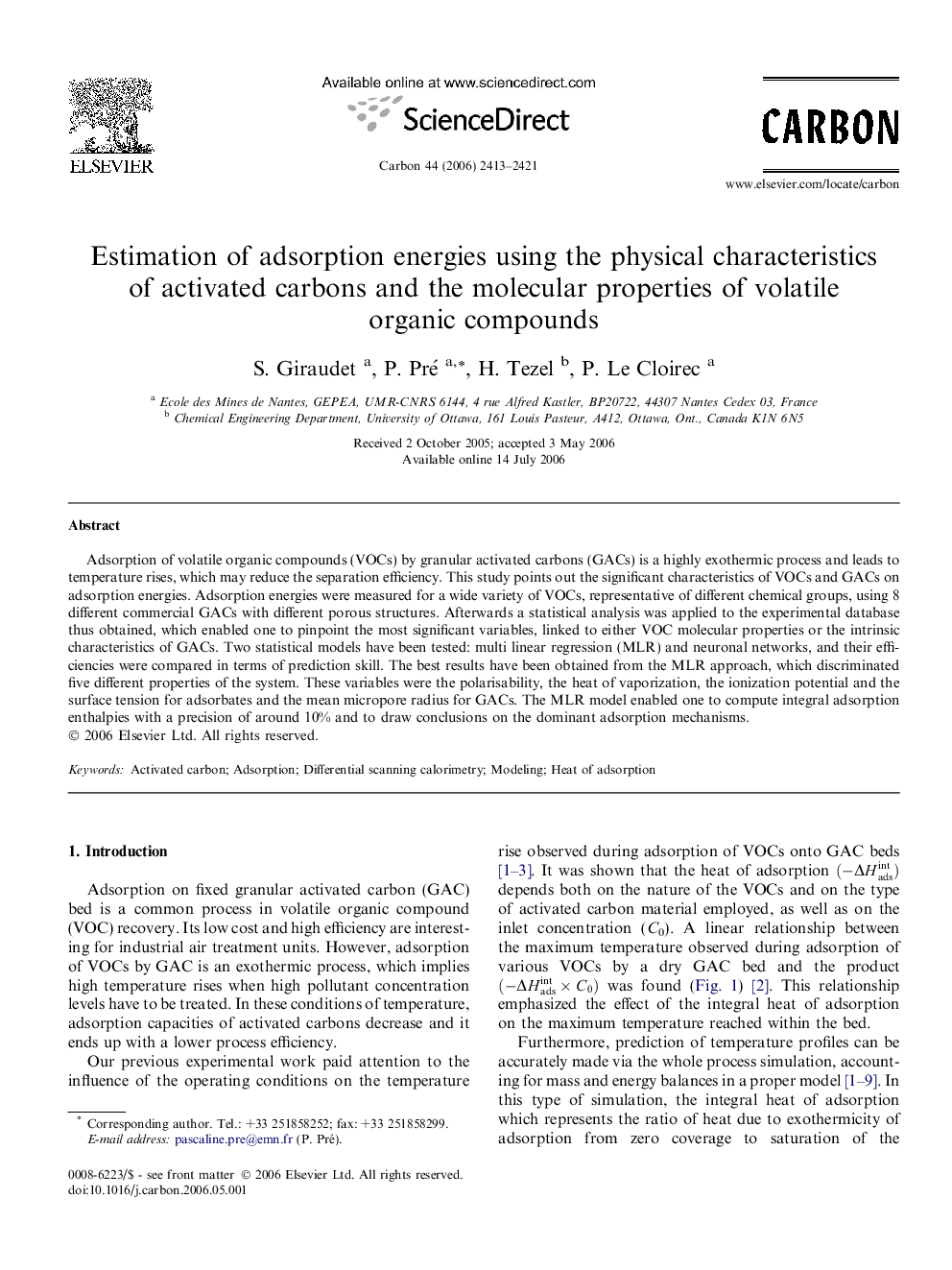| Article ID | Journal | Published Year | Pages | File Type |
|---|---|---|---|---|
| 1417812 | Carbon | 2006 | 9 Pages |
Adsorption of volatile organic compounds (VOCs) by granular activated carbons (GACs) is a highly exothermic process and leads to temperature rises, which may reduce the separation efficiency. This study points out the significant characteristics of VOCs and GACs on adsorption energies. Adsorption energies were measured for a wide variety of VOCs, representative of different chemical groups, using 8 different commercial GACs with different porous structures. Afterwards a statistical analysis was applied to the experimental database thus obtained, which enabled one to pinpoint the most significant variables, linked to either VOC molecular properties or the intrinsic characteristics of GACs. Two statistical models have been tested: multi linear regression (MLR) and neuronal networks, and their efficiencies were compared in terms of prediction skill. The best results have been obtained from the MLR approach, which discriminated five different properties of the system. These variables were the polarisability, the heat of vaporization, the ionization potential and the surface tension for adsorbates and the mean micropore radius for GACs. The MLR model enabled one to compute integral adsorption enthalpies with a precision of around 10% and to draw conclusions on the dominant adsorption mechanisms.
